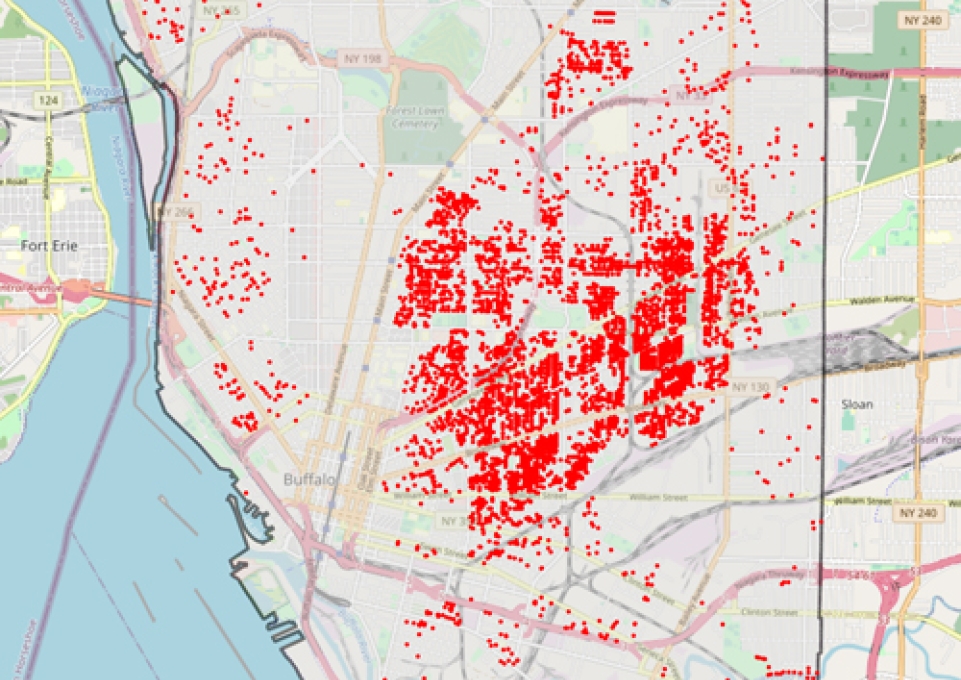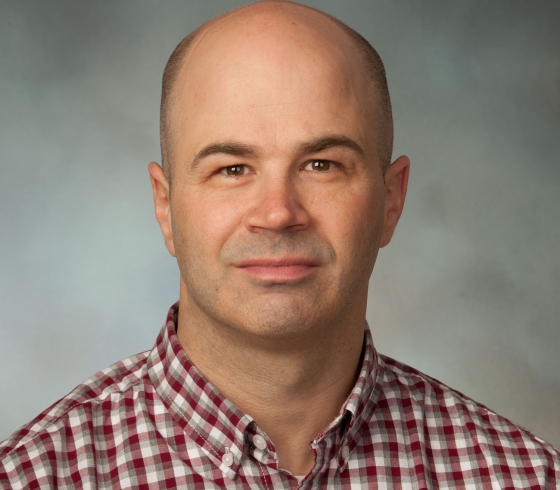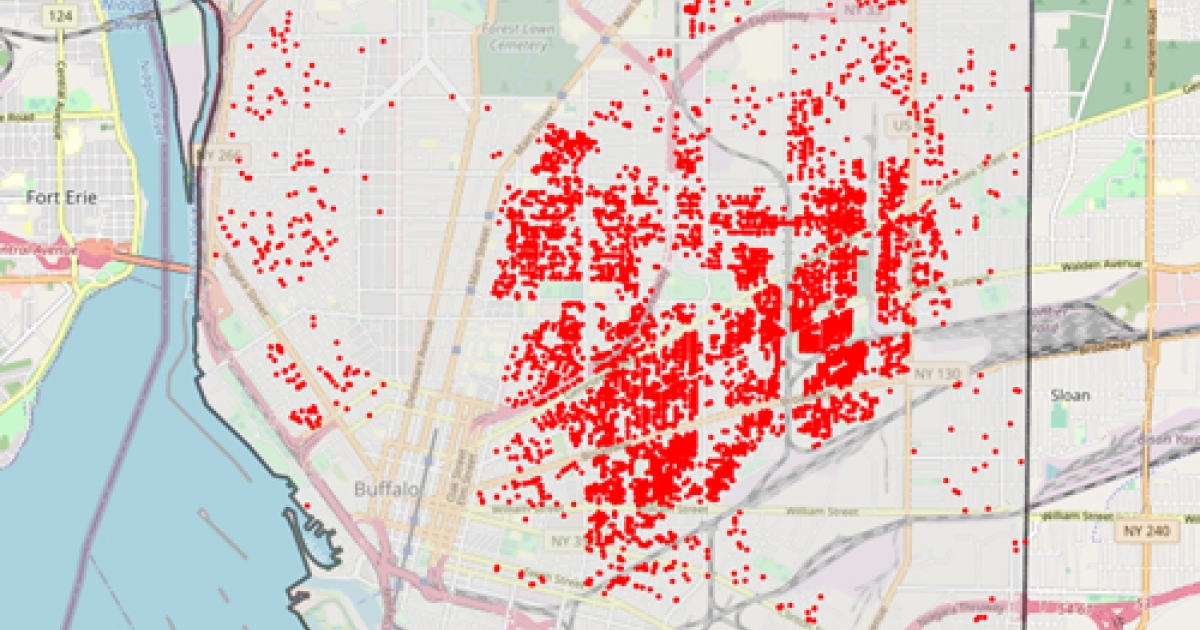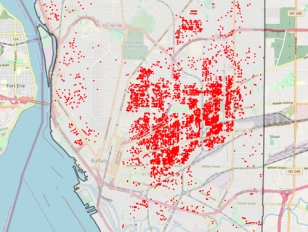
The students in Jason Knight’s senior urban planning practicum last spring took on a big urban-engaged community project. Using geographic information systems and real property data, they created an inventory of vacant land in the city of Buffalo, assessed potential reuse options, and presented their findings (PDF, 18 MB) to a number of stakeholders, including Habitat for Humanity, Grassroots Gardens of Western New York, and Common Council members and staff. The idea was to create a way for the city to better use its vacant lots in order to serve the community.
“These two nonprofits have a real need to access and acquire vacant lots to complete their missions as nonprofits,” said Knight, an associate professor in the Geography and Planning Department.

Jason Knight, Ph.D.,
Associate Professor
Geography and Planning Department
Habitat for Humanity builds low-income housing for people in need. Grassroots Gardens of Western New York helps residents create community gardens in the city. The city owns about 7,000 lots, Knight said, and acquiring the lots can be complicated.
“The lots are just sitting there, and not providing any social or economic value to the community,” he said, adding that the nonprofits don’t have enough money to pay fair market value for the lots.
Issues around affordable housing, food security, and poverty can be helped in part by these nonprofits and their use of the vacant lots, Knight said.
“So what my students did this spring was a lot of research on the total inventory of vacant lots in the city of buffalo,” he said. “How many are there, and where are they? It was data-driven research to count the total number of lots and analyze the process and procedure by which nonprofit organizations can acquire properties from the city.”
The students also looked at how other cities, like Cleveland, Detroit, Milwaukee, and Philadelphia, are repurposing and reusing vacant lots. The idea was to present the data to the stakeholders in person, with a “next steps” exercise planned on how to move forward. Because of the coronavirus pandemic, the students had to present their findings virtually through Zoom. Among those in attendance were Valerie Malia, senior legislative assistant to Buffalo Common Council Majority Leader David A. Rivera’s office, who represents the Niagara District, and Council Member Mitch Nowakowski, who represents the city’s Fillmore District. Nowakowski is a Buffalo State graduate and took Urban Geography with Knight.
The presentation garnered questions and commitments to move forward on the ideas presented, Knight said.
“Those in attendance were interested and pushing to turn this work into something actionable by the city,” he said.
Nowakowski said the students were able to articulate the complexities of vacant urban lots present both in the Fillmore District, and throughout the city.
“Through their presentations, the city of Buffalo can utilize their knowledge to examine how we can create neighborhoods for everyone,” he said. “Jason’s class was able to break down and examine data, maps, and community infrastructure to present land-use planning strategies for the city’s East Side.”
Knight said his students’ work in this senior capstone project aligns with Buffalo State’s mission as an urban-engaged campus.
“This might be a project that started on Buffalo State’s campus in our program, but it could turn into a policy action item in council chambers in the fall,” he said. “To me, that’s what applied research like ours does for community engagement and what the urban planning program is about.”



